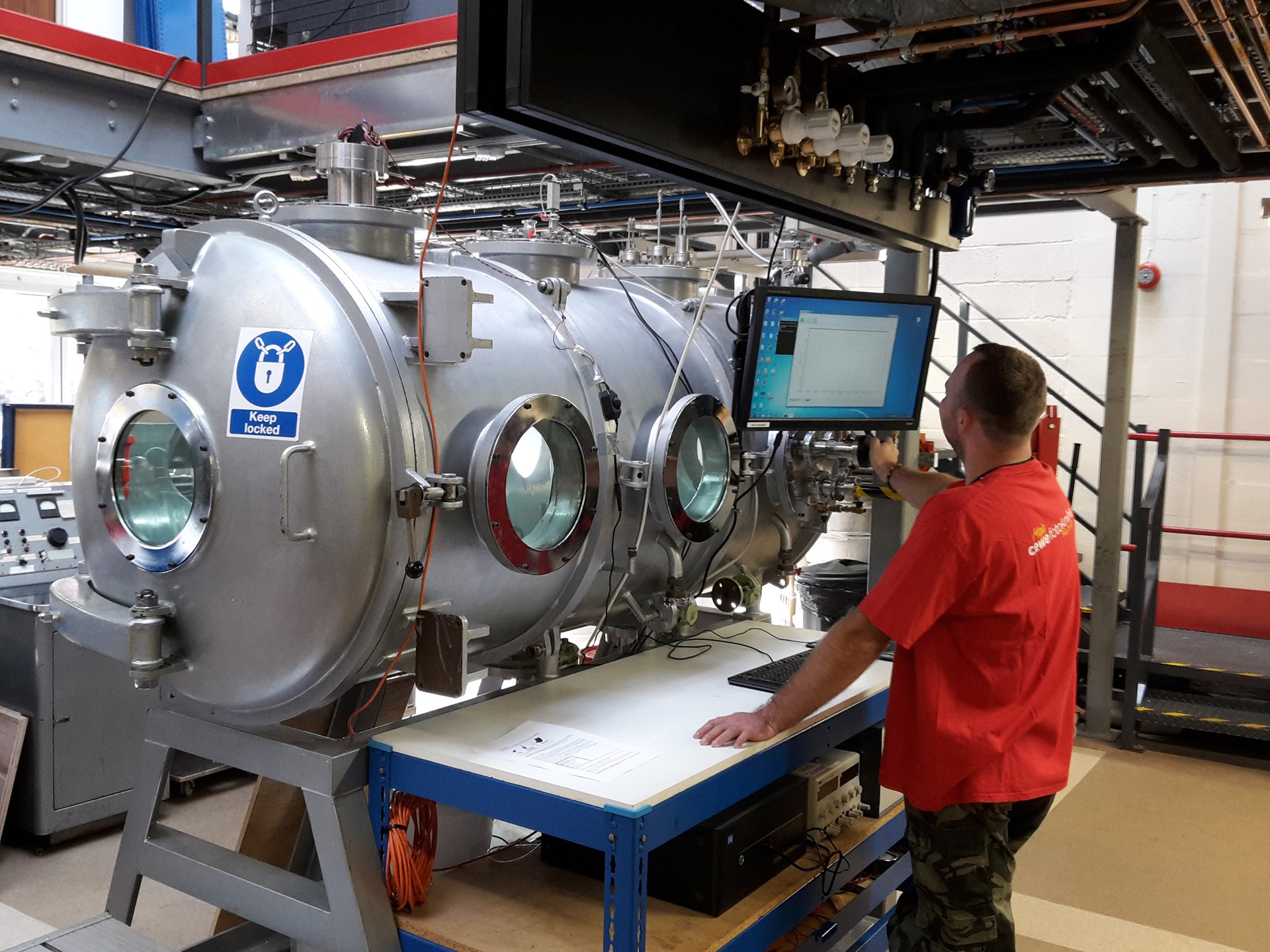Conditions on Mars simulated in a low-pressure chamber
Conditions on Mars simulated in a low-pressure chamber
The atmospheric pressure on Mars is approximately 150 times lower that that found at sea level on Earth, and temperatures are much lower most of the time and in most regions. In the subpolar lowlands, they often drop to minus 100 degrees Celsius at night. Under these pressure and temperature conditions, how does water-saturated mud flow over the surface of Mars? A group of European scientists has attempted to close this knowledge gap and poured water-rich mud onto a cold sand surface in a low-pressure chamber (in the image – one of the scientists involved in the study, Ondřej Krýza from the Czech Academy of Sciences) at the Open University in Milton Keynes (UK) and observed the flow behaviour (see video). In particular, the low atmospheric pressure on Mars changes the flow behaviour drastically compared to what occurs on Earth – it resembles thin, low-viscous basaltic lava.

